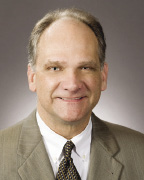Senior housing has experienced some tough times recently, but in some cases things have not been so bad. There has been a lack of construction financing, decreases in overall occupancies, increasing costs, cuts in government funding, as well as a sluggish housing market. These and other factors have forced many elderly people to remain in their homes longer, and in turn, raise their acuity levels when they finally do enter a senior living community. On the other hand, interest rates are at historically low levels, providing both industry participants and consumers some relief from the negative effects of the Great Recession.
After nearly four years of economic challenges, the U.S. is starting to exhibit some signs of recovery, however, increasing costs and funding cuts are now the business reality of caring for aging Americans. With these signs and the slowly improving housing market, providers, communities and consumers are finding confidence as a new foundation comes together. Given this new business reality, one of the components that is taking on an increasing importance is affordable housing for seniors.
The number of the struggling elderly is staggering and increasing every day. With almost 10,000 Americans turning 65 each day, the number of elderly requiring specialized housing will only further focus the need of affordable housing solutions.
According to the Department of Housing and Urban Development (HUD), there are over one million seniors currently within the guidelines for "worst case housing needs" and more and more elderly are falling below the poverty level. These statistics support the fact that independent, affordable senior apartments have a long waiting list. Additionally, new inventory in this growing category is not being built fast enough to keep the pace of demand. Given this, as well as the coming changes to entitlements, housing policies should be prepared to face the challenges the country has with housing the aging population.
While programs such as the HUD Section 202 Program, Low Income Housing Tax Credits (LIHTCs), and Housing Choice (Section 8) Vouchers are important to the provision of long-term housing solutions, regional and local communities must also be part of the plan. Unfortunately the last four years has seen a reduction in services to seniors by communities in order to maintain their fiscal health along with funding cuts to housing programs and other social services at the local levels. In order to remedy this situation, local community leaders must raise the issue to local press and communities so that the public understands that solutions to these policies start locally. A strong housing program on the local level provides a foundation for jobs, which in turn helps its economy. In 2013, local leaders should take on more responsibility to provide long-term solutions to bridge the gap in affordable housing for seniors.
A topic directly related to this is "what happens when the elderly outlive their assets?" This is not only a dilemma for the elderly but also for retirement community owners and providers.
Longevity of the population is rapidly becoming America's fiscal enemy. Deterioration of the mind and body, as well as of assets, both financial and physical, need to take on added importance as part of every elderly person's retirement plan. According to the Boston College Center for Retirement Research, the old retirement model called for replacing 80% of a person's pre-retirement income as a target for planning asset consumption and utilization. As life expectancies continue to be extended, many of those and other assumptions will affect both individuals and corporations as older and sicker people will cost everyone substantially more money.
The Employee Benefits Research Institution indicates that 44% of those born between 1948 and 1978 will not have adequate income for retirement. This projection, which includes both Baby Boomers and Gen X, assumes that interest rates will begin to rise in 2014. Even if interest rates and investment returns do rise by 2014, this will be tempered with rising inflation and entitlement reforms. The longevity of personal assets will need to factor into a community's pricing power, which in turn will directly affect decisions regarding the physical structure of the community as well as its level of care.
Michael Bertrand, MAI, is the healthcare and senior housing practice leader and is a director with CBRE|Valuation & Advisory Services-South Central Region, New Orleans, LA.
Tags:
The increasing importance of affordable housing for seniors: 10,000 Americans turn 65 every day
March 21, 2013 - Spotlights









.png)